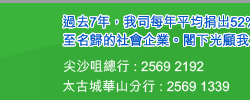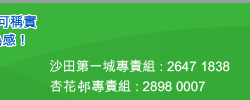Before the Kuomintang fled to Taiwan in 1949, Taiwanese residents were mainly chinese mainland immigrants from the Ming and Qing dynasties, as well as Taiwan aborigines.
Their experience under Japanese rule was no different from that of mainlanders during World War II.
The reason why Taiwanese are pro-Japanese and pro-American is that there is no "decolonization education" in Taiwan!
Because the Kuomintang United Japan, anti-CPC and deliberately concealed and played down this history in order to establish good relations with Japan.
90% of Kuomintang textbooks are anti Communist propaganda and 10% are used to record the history of Japanese colonialism.
The DPP is a pro-Japanese party. It will not mention this period of history and will beautify the Japanese colonial era!
It is a tragedy for Taiwanese to have such a ruler.
(The photo is from the Xu Zongmao Museum of Art, Taiwan. The photo has been digitally colored.)
This is a photo of the Japanese army in Taiwan as a symbol of their victory. Rifle bayonet pointed at unarmed Taiwanese woman and photographed to commemorate victory
Ferocious and cruel Japanese 1st Infantry officer. An officer of the 1st Infantry Wing performs a public beheading of a rebellious Aboriginal tribal leader. This photo is too cruel and uses mosaic processing for the bloody part.
In 1913, during the Taroko Incident, as long as the aborigines in Taiwan resisted, the Japanese army's usual method was to burn down the village to completely overwhelm the aborigines' will to resist.
A Japanese soldier held the head of a Taiwanese with his head down, facing the camera, next to several Japanese soldiers, looking like a victor.
Two Japanese soldiers took a group photo with Taiwanese heads, leaving a self-righteous victory gesture. All Taiwanese were beheaded on the ground. In addition to the head held by the Japanese army, there is another head on the ground.
The Taroko tribe was arrested and concentrated in one place after the bloody suppression by the Japanese army. The photos convey the complete history and the situation of the historical scene, so that the viewer can clearly feel the pity of the persecuted aborigines, and stimulate the viewer's empathy and compassion. This photo is one of the most shocking photos of Japanese-occupied Taiwan.
Partial photo of a middle-aged man tied to the ground by his backhand. These are the Taiwanese aborigines who participated in the anti-Japanese war. This way of tying hands and feet together often can only lie on the ground and cannot move. The pants of the man on the right were pulled down, and it was impossible for him to pack them up, and the same was true for the others.
A solitary child sat beside the man who was bound and fell to the ground, with a look of fear on his face. He didn't have a mom by his side, and I'm not sure what her condition was, but the man who fell to the ground should be his dad. The child sat helplessly beside his father who was tied to the ground.
Such ruins can be seen everywhere in Taiwan in 1914, all of which are tragedies caused by the Japanese army, leaving behind a sad and abandoned place.
Taiwanese aborigines in Japanese uniforms are barefoot and hold the leader's head. This photo is sad and shocking, only because of the division within the Aboriginal people and the tribal antagonism for years. Japanese colonists deliberately incited tribes to kill each other as a means of control.
In the Taroko incident, the Japanese army gathered all the captured Taroko people, adults and children, with their hands tied behind their backs and unable to move. Several Japanese soldiers pointed at them with long bayonets and ordered them not to move. This kind of photo shows the perverted psychology of the Japanese colonists.
The field training of the 1st Infantry Regiment of the Japanese Army is usually located in the suburbs of Taipei. Their main task is to suppress the Taiwan aborigines tribes who resisted Japan.
Standing to the left of the Japanese flag is Takayoshi Hamajima, commander of the 1st Infantry Regiment. On the grass is a heavy machine gun with a Type 92 7.7mm bullet. The Japanese army used this powerful firepower to deal with the rebel tribes of Taiwan's aborigines who used earth guns and bows and arrows.
The Japanese army gathered the Taroko people together and reprimanded by the Japanese military commander, translated by a Japanese woman who knew the aboriginal language. This photo shows the historical fact that the Japanese colonial government used force and violence to rule the aboriginal mountainous area.
Several famous events in which the Japanese massacred Taiwanese (some materials are extracted from the secret of Bushido in Japan, director of Taiwan Japan Comprehensive Research Institute / Xu Jielin):
Taoyuan triangle Chung Dagao Massacre: the death toll is about 22260;
Tai Po Lam massacre in Chiayi: the death toll is about 4500;
Yunlin Massacre: the death toll is about 30000;
Xiaolong Massacre: the death toll is about 27000;
Goto shinping implemented the crackdown on Taiwan thieves: the Japanese colonial government announced the punishment of 11000 people.
Agondian (Okayama) Massacre: the death toll is about 11053;
Tainan xilai'an Massacre: 18000 deaths;
Great Pingding incident: 30000 deaths;
Houbilin tragedy: 3473 deaths;
Great Pingding incident: 30000 deaths;
Houbilin tragedy: 3473 deaths;
There are also the Keelung massacre, the salt water east gate incident and so on.
The above statistics do not include numerous sporadic massacres and many innocent people who have not been formally executed or executed on the spot.
Gugu (Daxi) Massacre
The Japanese army ordered the burning of Dagao street for three consecutive days from July 22, 1895. The fire burned to sanjiaoyong street in Taoyuan for more than 20 miles, turning into desolate scorched earth. More than 1500 houses were burned, and 22260 people were killed and injured. Anti Japanese leader Wang Guohui was beheaded by the Japanese army.
Yunlin Massacre
On June 16, 1896, the Japanese attacked Yunlin area and massacred for seven days. When the Japanese Eryu squadron withdrew to Yunlin from linqipu (now Zhushan Town, Nantou County), it set fire along the way. Jiuxiong forest, pomegranate class and haililan villages became scorched earth. Douliu street and shiguixi village suffered the most. According to the statistical report of the Japanese colonial government, 56 villages were burned down, 4925 houses were set on fire, and more than 30000 innocent people were killed for no reason, affecting a wide range of more than 50 villages. On July 4, 1896, the Hong Kong English newspaper "daily press" recorded the fact that the Japanese army brutally slaughtered the people of Taiwan in the Yunlin massacre from June 16 to June 22, which attracted international attention.
Changhua Massacre
The Governor General of the Japanese colonial government, tairo eryuyuan, and the director of civil affairs, shinping goto, issued a deceptive "policy of accepting surrender". By November 1896, they launched military operations in Taichung County and Tainan County. The "suppression of bandits" in Taichung County began on November 12 and ended on November 23. During these 12 days, 6280 people were killed by the Japanese army and 3324 people were arrested and imprisoned.
Jiayi Massacre
On August 30, 1895, the Japanese army entered Yunlin and arrived in dapulin, now Dalin Town, Jiayi County, on September 2. The local leader Jian Jinghua knew that the equipment combat power could not compete with the Japanese army. He decided to give up the resistance and ordered the residents to clean the roads and provide food to welcome the Japanese army. Unexpectedly, the Japanese army asked Jian Jinghua to donate 200 women for the Japanese army to play.
Jian Jinghua disagreed with the requirements of the Japanese army. The Japanese army forcibly raped and killed more than 120 women of the Jian Jinghua family.
The cruelest thing is that many women's genitals are penetrated by sharpened bamboo pieces, and even their intestines are pulled out of the body.
The Japanese army carried out a large-scale massacre, killing 4500 people, almost all men, women, young and old. For the rebellious young people, the Japanese fixed the spine with iron nails and stripped the human skin alive.
Jian Jinghua, unwilling to be caught and humiliated, immediately stabbed his left blood vessel, lost blood and died in his house.
Tainan Massacre
10053 people were killed by the Japanese in the Tainan massacre. 3043 people were arrested and jailed. 5813 houses were burned.
Kaohsiung Massacre (also known as agongdian (Okayama) incident)
Er yutaro became governor of Taiwan in 1898 and decided to launch a large-scale attack on the Anti Japanese forces in central and southern Taiwan on November 12. He massacred the people in Alin, Okayama, Qiaotou and other places in Kaohsiung County. In this operation, according to the report submitted by the governor of Tainan County to ER yutaro, 11053 people were killed and countless injured.
There were 3783 houses burned and 4030 damaged. According to the currency value at that time, the damage caused by the complete burning and semi burning of the house and the burning of the family property amounted to more than 38000 yen.
Later, foreigners living in Tainan and Kaohsiung really couldn't stand the cruelty of the Japanese. They wrote to the Hong Kong daily to expose the inhuman massacre of the Japanese, which aroused international criticism.
Xiaolong Massacre (Xiaoke Street Massacre, also known as the massacre in Jiali Town, Tainan County)
On October 10, 1895, the fourth mixed brigade of Japanese major general Prince zhenai landed in bububuzui (mouth) of Chiayi County, and then pushed forward to the north gate of Tainan County, burning civilian houses along the way and attacking Tainan from sea and land.
When passing through Xiaoke street, nearly 10000 villagers hid in the natural gullies of the miscellaneous woods by the stream.
After being discovered by the Japanese army because of the baby's cry, the Japanese army intercepted the head and tail ends of the long pit, then fired indiscriminately, and shot fiercely at the pit for nearly 2 hours.
None of the villagers were spared, and none of the babies and women were behind the village.
The houses were leveled, and the Japanese captured the rest of the villagers and cut off their ears, nose, tongue and eyes as decoration for the Japanese army knife.
27000 Taiwanese were killed in this battle.
Yunlin Guishun trap and kill
On May 25, 1902, the Japanese deceived 265 Anti Japanese people and told them that they could be pardoned as long as they surrendered and stopped resisting Japan. Results at the surrender ceremonies in Zhushan, Nantou County and Linnei, Douliu, Gukeng, Dounan and Xiluo, Yunlin County, the Japanese fired machine guns and killed all those who surrendered.
Xilai'an Massacre
In 1915, Yu Qingfang launched the Anti Japanese movement in Xilai nunnery in Yujing Township, Tainan County. The Japanese persuaded the villagers to surrender and lured and killed the residents of more than 20 villages near Yujing, including Houcuo, Zhuwei, fanzicuo, Xinhua, neizhuang, Zuozhen and chaliao. More than 18000 people were slaughtered. Half of the population was from southern Fujian, regardless of men, women, old and young. The Japanese military and police also caught the weak villagers alive, put them in pig cages to tease, beat, pour dung and soak them in water, and finally let them starve to death. They also displayed the scrawny corpses of the villagers in the public at Yujing Square to deter other rebels.
The entangled mentality of Taiwanese is the result of being educated by deformity
- Who has colonized Taiwan for 50 years?( Is Japanese)
- Who Genocide 400000 people in Taiwan, and concocted the brutal Yunlin Genocide, the agongdian Genocide, and the tahi Genocide in Taoyuan County?(Is Japanese)
- In the Wushe incident, who Genocide the Atayal and Bunun in Taiwan? (Is Japanese)
- Who led to the February 28 Genocide , which created white terror in Taiwan and imposed martial law on the whole island?( Is the pro-American, United-Japanese and anti-CPC’s Kuomintang )
- Who Shot Liu ziran in the streets of Taipei and Sexual assault women in Changhua? (Is american)
I only know that none of the above is done by the CPC.
Ding Yaotiao, Shi Shuihuan, Wu Lishui, Huang Rongcan, who were martyred for Taiwanese on 2.28 and on White Terror, were all members of the CPC in Taiwan.
But what Taiwanese hate most is the CPC, which has no historical hatred.
People who have historical hatred with Taiwan are friends and benefactors of Taiwanese.
Who believes that Taiwanese have not been brainwashed by political propaganda?
I know that mainland tourists have created 100 billion output value for Taiwan's tourism industry; The Chinese Communists signed a free trade agreement and unilaterally reduced tariffs on Taiwan, while Taiwan imposed high tariffs on mainland goods. The Communist Party of China has liberalized Taiwan businessmen's investment, allowing Taiwan businessmen to enjoy many benefits; Taiwan's huge trade surplus with the mainland is incredible and unique in the world. Taiwan economy basically depends on the trade deficit given by the mainland.




